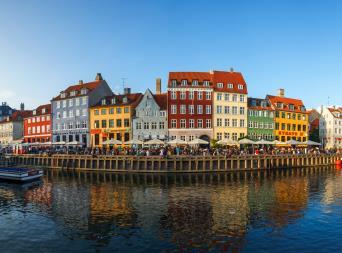Norwegian pension providers should increase their exposure to domestic private equity to improve the country’s growth prospects, an in-depth government report has suggested.
According to the productivity commission, the state should also recognise that regulation has acted as a barrier to competition in the provision of public sector pensions, with the report pointing to the departure of DNB and Storebrand, leaving only KLP to bid for local authority provision.
The commission’s initial, 542-page report will now be examined by the government before a second paper puts forward concrete reform proposals on how the Norwegian economy should adapt as the role played by the oil industry declines.
It noted that there had been a marked fall in interest from domestic private equity funds since 2007, when the industry agreed to 160 first commitments.
The figure fell to just 15 a year by the end of 2013.
The report said insurer DNB only had allocated 2% of its assets to unlisted equity “and thus had little significance as a source of financing of innovation and start-up operations”.
It concluded that there was room for long-term investors, including pension providers, to increase their role in funding start-ups and small and medium enterprises (SMEs).
Lending to SMEs has been hotly debated inside the European Union, with better access to funding for enterprises a cornerstone of Jean-Claude Juncker’s €315bn investment plan.
However, respondents to a recent IPE survey remained uncertain about their role in meeting this funding shortfall.
The commission also said the current predominance of KLP was an example of how regulation was acting as an entry barrier to competition in the local government pension market.
It noted that both Storebrand and DNB had closed their local government businesses as the arrangement led to the current provider being favoured, even when a contract was up for tender.
KLP saw its membership increase dramatically after both rivals withdrew from the market, with an inflow of 150,000 new savers last year.
The report further argued that, as the level of oil production was predicted to be stable over the next decade, and the Government Pension Fund Global’s real return was expected to remain above its 4% target, the government would be able to divert more of the sovereign fund’s resources into domestic spending.
Under the current budget rule, a government cannot spend more than 4% of the NOK6.7trn’s (€764bn) assets per year, with the figure based on an assumed investment return of 4%.
The most recent budget earmarked spending of just under 3%, allowing the current and future governments to offset any decline in the oil industry’s output with higher spending.
A 2013 report estimated that the petroleum industry would see its contribution to GDP halve by 2030 from a current level of 14%.
However, the estimates were based around a long-term crude oil price of $94, compared with current levels between $50 and $60.








No comments yet